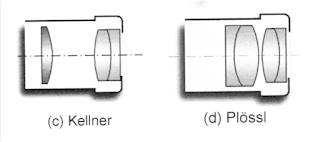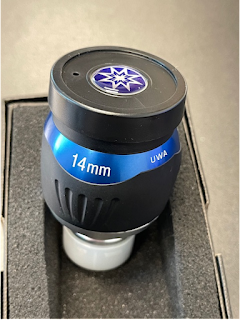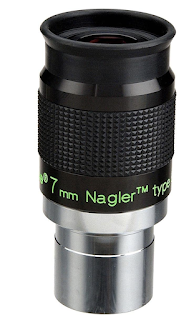I placed myself outside the accepted norms on two discussion boards for amateur astronomers, The Sky Searchers and Cloudy Nights. I withdrew from TSS though I still participate with CN.
To me there is no doubt that the owners of the discussion boards can have any rules they want: it’s their property. My problem—and it is entirely my own—is that the privately-own spaces are marketed as forums for discussion and in those discussions I found myself marginalized for not sharing common though unstated assumptions.
On The Sky Searchers, I posted a negative review of The Science and Art of Using Telescopes by Philip Pugh (Springer 2009). I placed similar though somewhat different versions on Cloudy Nights and Stargazers Lounge. You can read another here on Necessary Facts. On TSS, I received a nastygram from a moderator demanding to know how I could “launch an unprovoked attack on one of our special authors.” (The quote is inexact. I no longer have access. My IP address is blocked.) I said that they would not have a problem in the future and deleted the review. When I went back to find the exact exchange, I found the block.
Cloudy Nights LLC is a discussion forum for amateur astronomers. It is hosted by Astronomics, a second-generation family-owned retailer of telescopes and related instruments and accessories. The discussion board is now over 30 years old and has more than 115,000 unique usernames. Their policies and processes are time-tested and mature. However, they do include contradictory applications.
They say that they do not allow discussions of religion and politics. And that’s fine with me, except that several people do quote the Bible in their signature fields. Psalm 19:1 is perhaps the most common: “The heavens declare the glory of God; and the firmament sheweth His handywork.” In fact, my Austinite neighbor, Ed LaBelle has an outreach called “Psalm 19 Astronomy” and he writes under that label for the local astronomy club newsletter as well as Cloudy Nights. They do work hard at urban sidewalk outreach taking their telescopes to the public and I applaud their successes.
On The Sky Searchers, when birthdays come around, one of the frequent contributors places her good wishes in an off-topic chat area. As it was November, I followed suit by quoting astrological forecasts for the day as a nod to other Scorpios. Those were pulled down by the moderator because astrology is not allowed on TSS. If that stricture is in the published rules, I missed it. In a wider context, however, astrology is a religious practice and I wonder if the moderator would have pulled down a Christian benediction.
The article was only a historical view of a popular problem. The International Planetarium Society website (www.ips-planetarium.org) lists over 100 citations to the Star of Bethlehem. Writing in Archaeology Vol. 51, No. 6 (Nov/Dec 1998), Anthony F. Aveni cited 250 “major scholarly articles” about the Star of Bethlehem.
The moderator, csa/montana, pulled it because it discusses religion, which is not allowed on Cloudy Nights. And that would be fine, if people did not have Scriptural quotes in their signatures.
Cloudy Nights hosts a forum for discussing Light Pollution. The guidelines are very clear. They do not allow people to advocate shooting out lights with BB guns.
LP Forum Guidelines - Please Read
Started by Glassthrower, Jan 21 2008 10:23 PM
Cloudy Nights wishes to foster a positive environment where the science of light pollution can be discussed. People seeking to learn more about light pollution should be able to come here, peruse the information available, discuss the issue, and walk away with something positive gained - and hopefully a new appreciation (or at least a curiosity) for starry dark skies the way nature originally intended them.
We want to provide useful information that will help people take civic action on their own, or with local/national networks (like the IDA) - to implement dark-sky friendly regulations in their area. Working with local and state governments, zoning commissions, lighting boards, and utility departments can be an intimidating experience for the uninitiated - we'd like to offer a place for others to share their experiences and resources in this respect. But the politics of the day should always take a back seat to the academic and the science. Stick to the facts and leave the feelings out of it.
Full statement here:
https://www.cloudynights.com/topic/150672-lp-forum-guidelines-please-read/
Personally, I believe that concerns about light pollution and the associated problem of new constellations of artificial satellites are mostly Luddite rants against progress. The recent launch of the James Webb Space Telescope dramatically caps 64 years of progress in placing sensors and recorders away from the Earth, its atmosphere, and lights. That said, I am not insensitive to the frustrations of ground-based astronomers. In fact, I share them. But I tally the convenience of electricity and night-time lighting as a diminutive cost to myself. (Against Dark Skies on NecessaryFacts here. and I Like Satellite Constellations here.)
In response to a post, I quoted from those two essays. The moderator csa/montana closed the discussion saying that it had become political. So, it is appropriate to call for the United Nations to regulate the launching of satellites and further for your local government and the UN to debate whether and how to address light pollution. However, it is not allowed to question the need for those interventions.
http://www.phrack.org/archives/issues/38/2.txt
==Phrack Inc.==
Volume Four, Issue Thirty-Eight, File 2 of 15
[-=:< Phrack Loopback >:=-]
By Phrack Staff
Phrack Loopback is a forum for you, the reader, to ask questions, air problems, and talk about what ever topic you would like to discuss. This is also the place Phrack Staff will make suggestions to you by reviewing various items of note; magazines, software, catalogs, hardware, etc.
Date: March 22, 1992
From: "Michael E. Marotta" <MERCURY@lcc.edu>
Subject: Censorship in Cyberspace
To: Phrack Staff
I have been hired to write an article about the control of information in
cyberspace. We all know that Fidonet moderators and sysops devote their OWN resources for us to use. There is no question about the "right" of the sysop or moderator to delete messages and users. The practice of censorship is nonetheless newsworthy.
If YOU have experienced censorship on Fidonet or Usenet, Prodigy or CompuServe,or another BBS or network, I am interested in learning about your story. If you can supply downloads of actual encounters, so much the better.
If you have ever been censored, send me physical world mail about the event.
Michael E. Marotta
5751 Richwood #34
Lansing, Mich. 48911
http://www.phrack.org/archives/issues/38/2.txt
http://cu-digest.org/CUDS5/cud514.txt
Computer underground Digest Wed Feb 17, 1993 Volume 5 : Issue 14
ISSN 1004-042X
Editors: Jim Thomas and Gordon Meyer (TK0JUT2@NIU.BITNET)
Archivist: Brendan Kehoe
Shadow-Archivists: Dan Carosone / Paul Southworth
Ralph Sims / Jyrki Kuoppala
Copy Editor: Etaion Shrdlu, Seniur
Date: Thu, 11 Feb 93 20:17 EST
From: "Michael E. Marotta" <MERCURY@LCC.EDU>
Subject: File 5--Censorship in Cyberspace
Excerpts from "Censorship in Cyberspace" (c) 1993 by Michael E. Marotta the complete text (2000 words) appears in the ($5) 1993 Retail Catalog of Loompanics, P. O. Box 1197, Port Townsend, WA 98368. Founded in 1974, Loompanics, publishers of unusual books, features about 300 titles on privacy, underground income, self-defense, etc.
+++++
As Ayn Rand noted, when people abandon money, their only alternative when dealing with each other is to use guns. Yet, the anti-capitalist mentality permeates cyberspace. Most public systems and networks actually forbid commercial messages. So, computer sysops and network moderators are reduced to cavalier enforcement of their personal quirks.
When Tom Jennings created Fidonet, Omni magazine called him an "online anarchist." Since then, Fidonet has developed a governing council and lost Jennings. Over the last two years, I have been banished from
these Fidonet echoes:
* Stock Market for saying that Ivan Boesky is a political
prisoner
* Virus for saying that viruses could be useful
* Communications for saying that telephone service
should not be regulated by the government
* International Chat for asking "How are you" in Hebrew
and Japanese.
Kennita Watson, whom I met on Libernet, told me this story:
When I was at Pyramid, I came in one day and
"fortune" had been disabled. I complained to
Operations, and ended up in a personal meeting with
the manager. He showed me a letter from the NAACP
written to Pyramid threatening to sue if they
didn't stop selling racist material on their
machines. They cited a black woman who had found
the "...there were those whose skins were black...
and their portion was niggardly.... 'Let my people
go to the front of the bus'..." fortune, and
complained to the NAACP. I suspect that she (and
the NAACP) were clueless as to the meaning of the
term "niggardly". I (as a black woman) was
embarrassed and outraged. Because of the stupidity
of a bunch of paranoid people, I couldn't read my
fortune when I logged out any more. "
It is important to bear in mind that to the censor, censorship, like all evils, is always an unpleasant but necessary means to achieve a good result. Robert Warren is a sysop who replied to an article of mine on Computer Underground Digest. He said: ... People have a right to say what they want in public, but some don't care about the responsibility that comes with it. So you zap 'em." Now, there is no argument with his basic premise: Since he owns the equipment, he has the final say in its use. This is his right. Likewise, the administrators of publicly-funded university computers also engage in censorship under a mandate to serve the people who pay taxes. "All power tends to corrupt and absolute power corrupts absolutely," the historian John E. E. Acton said. It is no surprise that this applies in cyberspace.
Political and social freedom have little to do with constitutions or elections. Congress could choose a new prime minister every day or the people could elect the secretary of state to a three year term. The details are unimportant. Some places are free and some places are controlled because the people in those places need freedom or accept oppression. It always comes back to the individual.
Dehnbase Emerald BBS is home to libertarian and objectivist discussions and is a vital link in Libernet. The number is (303) 972-6575. Joseph Dehn is not interested in enforcing rules.
Albert Gore and George Bush agreed on the need for a "data superhighway." The Electronic Frontier Foundation has recommended that this national network be open to commercial enterprises. This is good. An open market is the best protection against power and corruption.
------------------------------
Previously on Necessary Facts
Jerry Emanuelson's Algebraic Proof of Ricardo's Law of Association.
Crimes Against Logic: Exposing Bogus Arguments


























